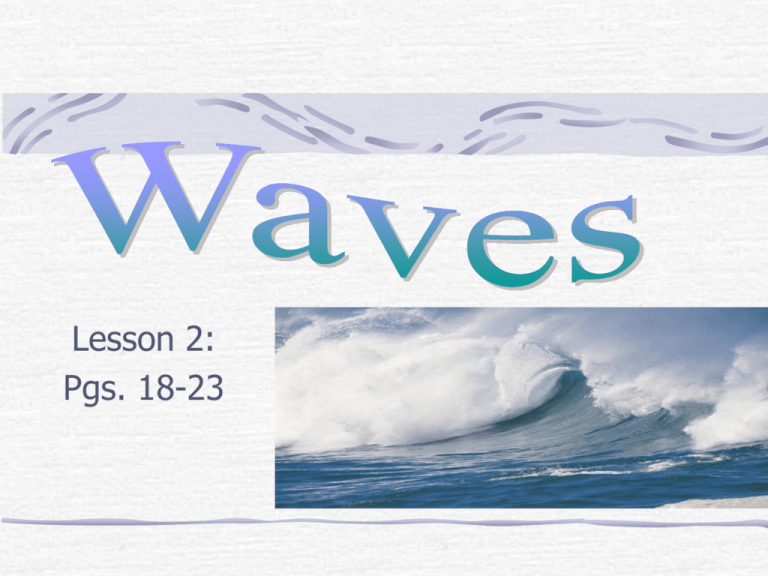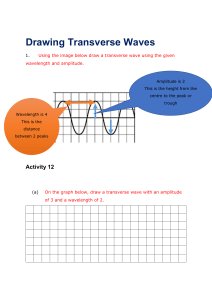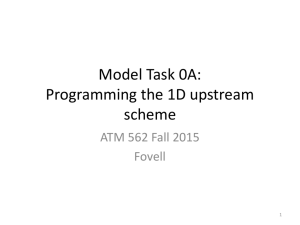Document
advertisement

Lesson 2: Pgs. 18-23 Basic Properties of Waves Amplitude Wavelength Frequency Speed Amplitude Amplitude is the maximum distance the particles of the medium carrying the wave move away from their rest positions. The farther the medium moves as it vibrates the larger the amplitude of the resulting waves. The greater the amplitude the greater the amount of energy Amplitude of transverse waves The amplitude of a transverse wave is the maximum distance the medium moves up or down from its rest position. You can find the amplitude of a transverse wave by measuring the distance from rest to crest or rest to trough. Diagram Amplitude of a longitudinal wave. The amplitude of a longitudinal wave is a measure of how compressed or rarefied the medium becomes. Wavelength A wave travels a certain distance before it starts to repeat. The distance between two corresponding parts of a wave is its wavelength. Transverse measure from crest to crest or trough to trough. Longitudinal measure from one compression to the next. Diagram Frequency The number of complete waves that pass a given point in a certain amount of time. Or, the number of vibrations per second. Frequency measured in hertz (Hz). Diagram Speed The speed, wavelength, and frequency of a wave are related to each other by a mathematical formula. Speed = wavelength x frequency Frequency = speed/wavelength Wavelength = speed/frequency So, how do you calculate the speed of waves? Equations Let’s practice! Answer Check Multiply the frequency by the wavelength to determine the speed. Row 1: speed = 3.5 m/sRow 2: speed = 3.5 m/s Row 3: speed = 2.5 m/s Row 4: speed = 2.5 m/s Row 5: speed = 2.1 m/s Row 6: speed = 2.2 m/s










